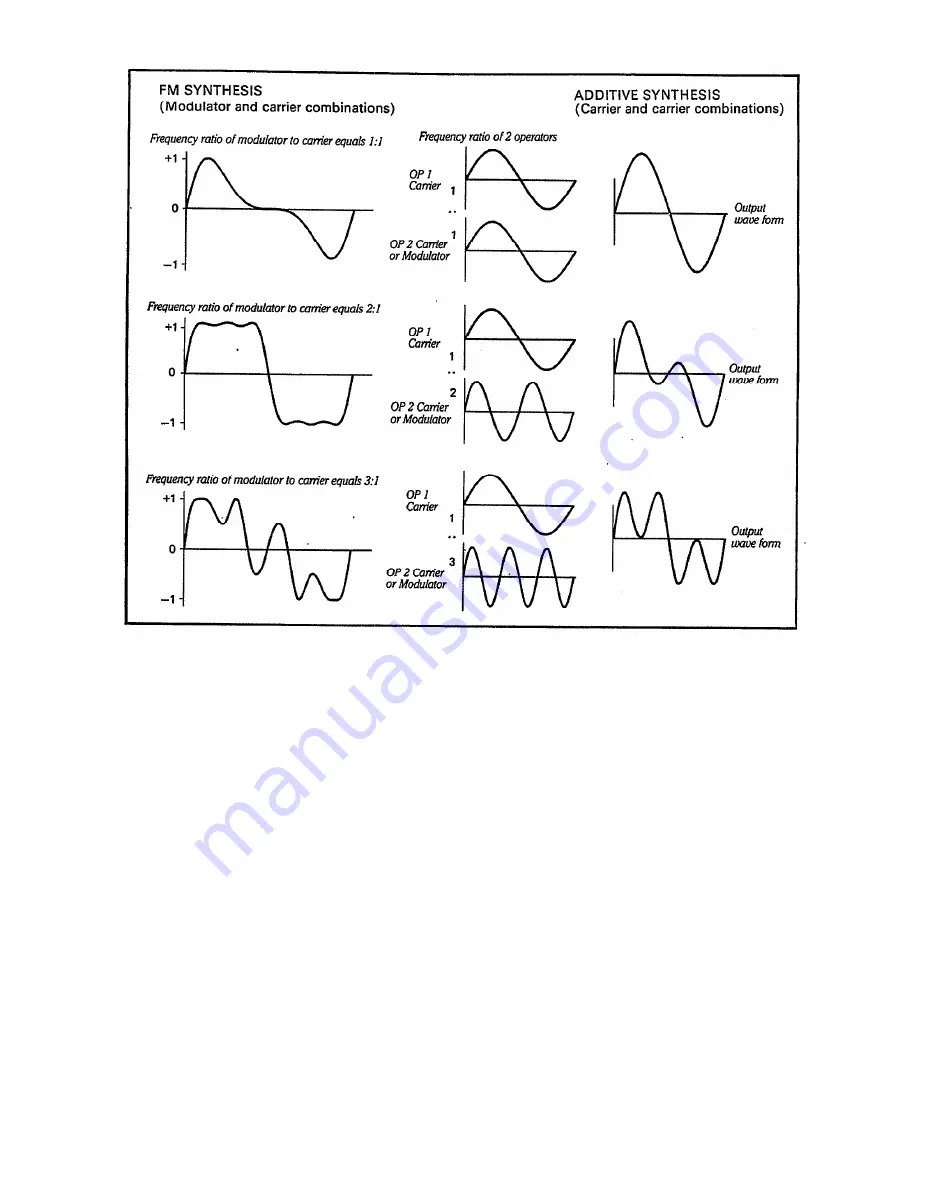
Still more variations can be achieved by changing the relative output levels between
operators; the greater the level of the modulating operator, the more harmonics
are present.
FEEDBACK
Note that every algorithm has one operator with a “feedback loop”–represented
by a line from the output of the operator which feeds back to the input of the same
operator. In effect, a feedback loop means that the operator is modulating itself.
While every algorithm has one feedback loop, feedback is not necessarily used in
every voice. One of the DX100 editing functions permits the feedback level to be
set between 0 (no feedback) and 7 (maximum feedback).
ENVELOPE GENERATORS
Consider what happens when you play a note on an acoustic instrument. The level
of the sound initially goes up to some value, then eventually falls to nothing, fol-
lowing a pattern that is characteristic of the particular instrument played. For ex-
ample, a low note on a pipe organ starts slowly when you press a key, because it
takes a while for the large column of air within the pipe to build up to maximum
oscillation level, and takes a while to die down once the key is released. A note
played on a wood block, on the other hand, starts quickly as the mallet strikes the
block, and stops quickly as the block stops resonating. The characteristic volume
pattern of any note played on any instrument is known as its “volume envelope.”
Most acoustic instruments also have a “timbre envelope,” in which the harmonic
27
















































